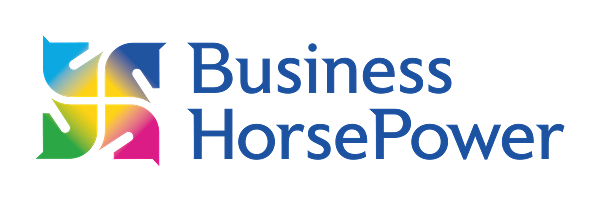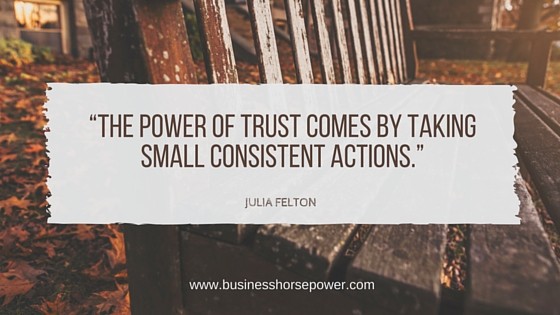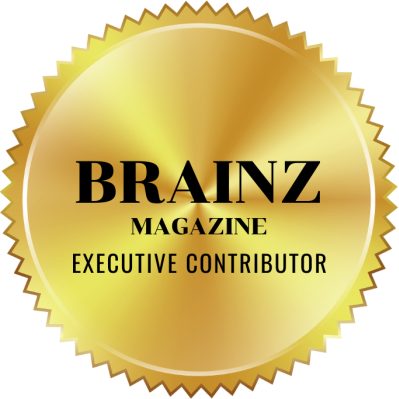Trust is the cornerstone of effective teamwork and leadership. Without it, collaboration falters, productivity plummets, and the workplace becomes toxic. In this week’s episode of Impactful Teamwork, Julia Felton shared a powerful story of trust-building through her experiences with two rescued ponies, Bracken and Thistle. These lessons are not only applicable to relationships with horses but also incredibly relevant to building trust with your team.
In this blog, we’ll explore Julia’s insights and provide actionable steps you can take to strengthen trust and relationships within your team.
1. The Foundations of Trust: Building a Relationship
When Bracken and Thistle arrived at Julia’s yard, they were terrified of humans. To build trust, Julia spent time in their space, simply sitting and reading a book. This process, inspired by her mentor Carolyn Resnick, is called sharing territory—spending time together doing nothing.
Action Steps:
- Invest Time in Relationships: Dedicate time to connect with team members beyond work tasks. Consider informal coffee chats or team-building activities to foster connection.
- Be Patient: Building trust is not instantaneous. Show up consistently, even if there’s no immediate response.
2. Respect Boundaries: A Critical Element of Trust
Horses communicate through subtle body language. Julia learned to approach Bracken by carefully observing her signals. When Bracken stepped back or looked away, Julia respected her space and retreated, creating a foundation of mutual respect.
Action Steps:
- Observe and Listen: Pay attention to non-verbal cues from your team. Is someone avoiding eye contact or disengaging in meetings? These could be signs they need space or support.
- Set and Respect Boundaries: Be clear about your own limits and respect the boundaries of others. In leadership, this also means ensuring you don’t overwhelm team members with excessive demands.
3. The Cost of Ignoring Boundaries
Initially, Julia was so excited about Bracken’s progress that she failed to set firm boundaries. This led to Bracken becoming overly bold, which was unsafe as she grew. Julia had to work hard to reset those boundaries, a process that required significant effort and consistency.
Action Steps:
- Set Expectations Early: Establish clear boundaries and expectations at the start of a project or relationship. This prevents confusion and frustration later.
- Course-Correct When Needed: If boundaries haven’t been respected, take the time to reset them, even if it feels uncomfortable.
4. The ABCD of Trust
Ken Blanchard’s ABCD model of trust provides a practical framework for leaders to build trust with their teams:
- A: Able – Demonstrate competence and capability.
- B: Believable – Act with honesty, integrity, and sincerity.
- C: Connected – Show care, empathy, and interest in others.
- D: Dependable – Be reliable and follow through on commitments.
Action Steps:
- Assess Yourself: Reflect on how well you embody each element of the ABCD model. Are there areas where you can improve?
- Communicate Clearly: Let your team know how you plan to demonstrate these principles and ask for feedback on your efforts.
5. Building Trust in Remote and Hybrid Teams
Julia highlighted the challenges of fostering connection in remote and hybrid work environments. Unlike the spontaneous interactions of an office, virtual teams require intentional effort to build relationships.
Action Steps:
- Create Opportunities for Connection: Schedule regular check-ins that are not solely focused on work. Use these moments to learn about team members’ interests and challenges.
- Be Present: In virtual meetings, give your full attention. Turn off distractions and actively engage with your team.
6. The Role of Feedback in Trust
According to the latest Edelman Trust Barometer, employees are nine times more likely to trust their manager if they provide feedback and effective coaching. Julia emphasized that even negative feedback is preferable to no feedback, as it makes team members feel seen and valued.
Action Steps:
- Give Regular Feedback: Offer constructive feedback that helps team members grow. Frame it as an opportunity for development rather than criticism.
- Acknowledge Efforts: Recognize contributions, even small ones, to show appreciation and build a sense of belonging.
7. Trust as the Foundation of Engagement and Productivity
Trust is not just a “nice-to-have” in teams—it directly impacts engagement, collaboration, inclusion, and talent development. Julia shared shocking statistics: only 29% of employees trust their immediate manager, and only 32% trust senior leaders. These low levels of trust create toxic environments, reducing productivity and profitability.
Action Steps:
- Lead by Example: Model trustworthy behavior. Be consistent, transparent, and accountable in all your interactions.
- Focus on Psychological Safety: Create an environment where team members feel safe to speak up, take risks, and make mistakes without fear of judgment.
8. The Energy of Leadership
Julia stressed the importance of managing energy as a leader. Horses, like team members, are sensitive to the energy you bring. High, chaotic energy can confuse or alienate others, while calm, grounded energy fosters trust and connection.
Action Steps:
- Practice Grounding Techniques: Use tools like box breathing to stay calm and centered, especially during high-pressure situations.
- Be Conscious of Your Energy: Check in with yourself before interactions. Are you bringing positive, focused energy to your team?
9. Authenticity and Vulnerability: The Keys to Connection
Horses can sense when someone is being inauthentic. Julia shared how pretending to be confident while feeling scared only made her horse, Cody, distrust her. Similarly, teams value leaders who are authentic and vulnerable.
Action Steps:
- Be Honest About Uncertainty: If you don’t have all the answers, admit it. Share your thought process and involve your team in finding solutions.
- Show Your Human Side: Let your team see your authentic self. Share personal stories or challenges to foster deeper connections.
10. Reflect and Take Action
As Julia’s story about Bracken and Thistle demonstrates, trust is built through consistent effort, respect, and authenticity. It’s not just a leadership buzzword—it’s the foundation of effective teams and organizations.
Key Actions to Build Trust Today:
- Spend Time Building Relationships: Invest in getting to know your team members on a deeper level.
- Respect Boundaries: Be mindful of personal space, emotional needs, and workload limits.
- Use the ABCD Model: Assess and strengthen your ability, believability, connection, and dependability.
- Give and Receive Feedback: Create a culture of open communication and continuous improvement.
- Foster Psychological Safety: Ensure team members feel safe to express themselves and take risks.
- Manage Your Energy: Approach situations with calm and focus, even in times of chaos.
- Be Authentic and Vulnerable: Show your true self and lead with humility.
Final Thoughts
Trust is the glue that holds teams together, and its absence can be catastrophic for engagement and performance. By embracing these lessons and implementing practical actions, you can create an environment where trust flourishes, relationships deepen, and your team achieves impactful results.
If you’re interested in exploring how equine-facilitated leadership development can help you or your team build trust, reach out to Julia at businesshorsepower.com.
Let’s reverse the trend of declining workplace trust—one relationship at a time.
Show Notes:
Here are the highlights from this episode:
01:02 A Story of Trust: Bracken and Thistle
05:12 Building Trust in Leadership
11:08 The ABCD of Trust
16:59 The Decline of Trust in the Workplace
18:25 Practical Steps to Build Trust
25:56 Final Thoughts and Call to Action





